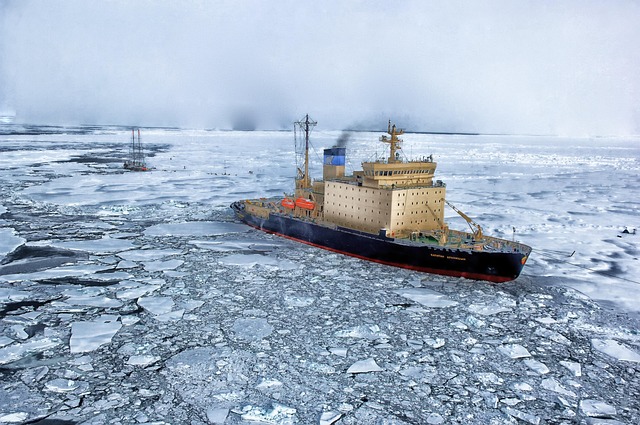Contrast therapy, using hot and cold treatments, is a powerful tool for athletes to enhance recovery, reduce inflammation, and prevent overuse injuries. By alternating between hot water (37-42.5°C) and cold water (15-18°C), this method stimulates blood flow, expedites muscle healing, and numbs pain signals. A simple 10-15 minute contrast bath session, with rest periods, offers significant benefits for post-workout recovery and long-term athletic performance.
“Unleash your athletic potential by discovering the power of contrast therapy—a game-changing approach to athlete recovery. This comprehensive guide explores how alternating hot and cold treatments, or hot and cold therapy, can effectively prevent overuse injuries.
From understanding the science behind contrast water therapy to its numerous benefits for sports recovery, you’ll gain insights into a versatile tool used by professionals. Learn practical steps to create your own contrast bath routine, taking your athletic recovery to new heights.”
Understanding Contrast Therapy: A Powerful Tool for Athletes
Contrast therapy, a powerful tool in the arsenal of athletes and fitness enthusiasts, involves alternating between hot and cold treatments to promote muscle recovery and prevent overuse injuries. This simple yet effective technique has gained popularity among professionals due to its numerous benefits. By immersing oneself in contrasting temperatures, such as hot contrast baths or applying ice packs for cold therapy, athletes can stimulate their bodies’ natural healing processes.
Hot and cold therapy for recovery works by enhancing blood circulation; hot water dilates blood vessels, increasing blood flow to muscles, while cold reduces inflammation and numbs pain signals. This alternating process accelerates the body’s ability to repair damaged tissue, reducing muscle soreness and speeding up recovery after intense workouts or sports training sessions. Incorporating contrast baths or simple applications of heat and ice into daily routines can be a game-changer for athletes looking to maintain peak performance and prevent injuries associated with overuse.
Hot and Cold Therapy: The Science Behind Effective Recovery
Contrast therapy, particularly the use of hot and cold treatments, has gained significant attention as a powerful tool for athletes seeking to enhance their recovery process. The science behind this method lies in its ability to stimulate blood flow and promote muscle repair. When an athlete undergoes contrast therapy by alternating between hot and cold, it triggers a series of physiological responses that benefit overall recovery.
Hot water or heat increases blood vessels’ diameter, enhancing circulation and delivering essential nutrients to sore muscles. This process helps reduce inflammation and accelerates the removal of metabolic waste products. Conversely, cold therapy constricts blood vessels, minimizing blood flow to the affected area, which can reduce swelling and numb pain. Combining these two techniques allows for a more efficient recovery process, making contrast water therapy an effective method for sports recovery. Athletes often utilize contrast baths or apply hot and cold packs to target specific muscle groups, ensuring faster healing and improved performance.
Benefits of Contrast Therapy for Sports Recovery
Contrast therapy, involving alternating hot and cold treatments, has emerged as a powerful tool in the athlete’s recovery arsenal. This simple yet effective method offers numerous benefits for sports recovery. By immersing oneself in contrasting temperatures, athletes can stimulate blood flow, which helps reduce inflammation and promotes faster healing of sore or damaged muscles. Hot water expands blood vessels, increasing circulation to affected areas, while cold contracts them, reducing swelling and numbing pain signals.
This natural technique is a game-changer for post-workout recovery, especially for those participating in high-intensity training sessions or competitive sports. It’s an accessible recovery method that athletes can easily incorporate into their routines at home. Contrast baths or showers provide a cost-effective way to enhance muscle recovery, ensuring that athletes can maintain peak performance and minimize the risk of overuse injuries associated with repetitive movements.
Practical Application: Creating Your Own Contrast Bath Routine
Practical Application: Creating Your Own Contrast Bath Routine
Contrast therapy, involving alternating hot and cold treatments, is a powerful tool for athletes looking to prevent overuse injuries and enhance recovery. To incorporate this method into your routine, start by preparing two vessels: one with hot water (around 104-109°F or 37-42.5°C) and another with cold water (approximately 59-64°F or 15-18°C). For a contrast bath, spend 10-15 minutes immersing your body in the hot water to increase blood flow and warm up muscles. Then, quickly switch to the cold water for 2-3 minutes to constrict blood vessels and reduce inflammation. This cycle can be repeated several times, with rest periods in between to allow your body to adjust.
Regular contrast baths offer numerous benefits, including reduced muscle soreness, improved circulation, and accelerated recovery after intense sports activities. By combining the heat’s vasodilation effects with cold’s vasoconstriction, athletes can promote better nutrient delivery to working muscles and faster removal of metabolic waste products. This simple yet effective method is accessible to everyone, allowing you to take control of your post-workout recovery and potentially prevent injuries in the long run.
Contrast therapy, harnessing the power of hot and cold treatments, offers athletes an effective and accessible method to enhance recovery from overuse injuries. By combining these contrasting temperatures, athletes can stimulate blood flow, reduce inflammation, and promote muscle repair. The benefits of contrast water therapy for sports recovery are well-documented, making it a valuable addition to any athlete’s injury prevention regimen. Incorporating alternating heat and cold into your post-workout routine may be the key to faster healing and improved performance.
